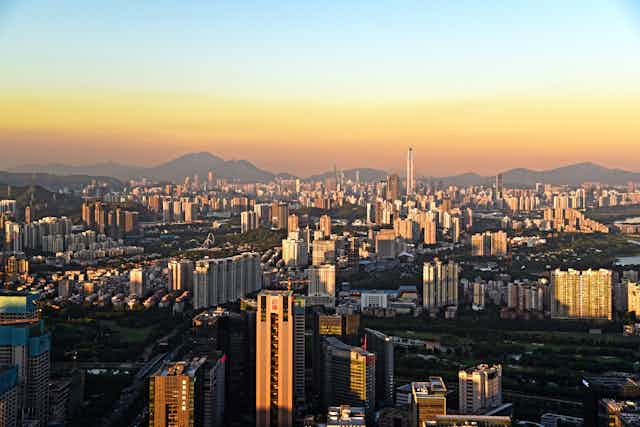Cities are the epicentres of human activity. They cover less than 2% of the earth’s land surface but generate about 70% of GDP and house more than half the human population. The importance of cities is only going to increase in coming decades as another 2.5 billion people move to urban centres.
This intense production and consumption requires huge quantities of natural resources. Cities account for more than 60% of global energy use, 70% of greenhouse gas emissions and 70% of global waste. Current practices are depleting the Earth’s finite resources, changing its climate and damaging its natural ecosystems. With our planetary life support system in the red, we need to put cities on a serious resource diet.
Resources efficiency in the New Urban Agenda
The New Urban Agenda adopted at the Habitat III conference outlines a vision for sustainable urban development. These global guidelines, along with the related UN Sustainable Development Goals, recognise the need to use resources more efficiently.
Habitat III included a number of sessions on resource efficiency and associated tools and initiatives. Organisations such as UNEP, UN-Habitat and the European Commission and its research centres typically led these events. The New Urban Agenda includes many references to efficiency and reduced consumption in cities.
We must now act urgently to translate words into actions. This will ease pressure on ecosystems and produce a range of co-benefits, including health, wellbeing and resilience.
How do we create more resource-efficient cities?
Cities use resources directly, such as burning fossil fuels for electricity and transport. However, indirect uses, such as water for growing food crops, are much wider-reaching.
It can be overwhelming to consider the resources used for all goods, processes and infrastructure in cities. Yet it is possible to measure this using a systems approach. Instead of considering components in isolation, the entire city is considered as an open system, connected to others.
This perspective ensures a much broader understanding of complex relationships between scales, resource flows, the built environment, socio-economic factors and ecological outcomes.
There are tools that embrace a systems perspective. For example, the urban metabolism approach considers cities as ecosystems, across which flows of resources (such as energy or water) are measured. Life cycle assessment measures resource use through the entire production, consumption and degradation process of a good or service.
These approaches have been successfully applied at various scales such as cities, neighbourhoods and buildings. This reveals that we are using more resources than shown by traditional assessment techniques (see this example on building energy efficiency regulations).
But measurement without action has no impact on the ground. How can these tools be used to transform our cities?

Many initiatives are targeting urban resource efficiency. The circular economy paradigm is a good example, where materials are reused, upcycled and recycled. It demonstrates that waste is a human concept and not an inherent property of cities. Waste does not exist in natural systems.
A range of projects by UNEP, the European Commission and other organisations support local resource efficiency initiatives and encourage local governments to implement related regulations. Blogging, data visualisation and disseminating research all help promote the adoption of resource efficiency concepts. In addition to the pioneering work of groups such as metabolism of cities, the uptake of open data is helping with this.
Learning from those who already live on less
Informal settlements provide interesting lessons in resource efficiency. Construction materials in these settlements are typically not very durable. However, because they are in short supply, they are constantly reused or repurposed, almost never discarded.
Other residents often reuse replaced materials, such as metal sheets, or store them for later use. This practice avoids additional resource use to produce new materials.
Although informal slum areas are often the focus of “upgrading” and improvement, lessons learnt in these settings can enhance material flow management and reduce waste elsewhere in cities.

Co-benefits of resource efficiency
More resource-efficient cities tend to result in better health outcomes. For instance, encouraging walking, cycling and public transport instead of car use can reduce fossil fuel consumption and greenhouse gas emissions, and improve population health through increased physical activity.
Food systems that promote consumption of fresh, local produce can benefit both the environment and nutrition. Energy-efficient housing reduces energy and water use and can improve occupants’ health at the same time.
Resource efficiency can also contribute to urban resilience. Nature-based solutions use relatively few non-renewable materials to increase resilience to environmental change and natural disasters. For example, a park can be designed to be flooded during storms or a tsunami, reduce the urban heat island effect, support urban ecosystems and provide areas for community activities, recreation and urban agriculture.
Efficiency can also ensure that redundancy – a core principle of resilience – is built into urban systems. This means resources can be repurposed in the event of an unanticipated shock or stress. For example, during the recent blackout in South Australia, a household with solar battery storage was able to maintain power for 12 hours “off grid”.
Working together for better solutions
Although these steps move cities in the right direction, more action from governments, the private sector and civil society is needed to transform our growing urban footprints.
Focusing solely on resource efficiency may neglect opportunities to generate co-benefits across sectors and will not provide robust solutions. We need to look at the entire city as a system and work together, across all disciplines, with effective and strong governance structures that support integrated policy definition and long-term implementation. If we don’t, we might simply shift a problem from one area to another, increase resource demand elsewhere, or create social divisions and tensions.
Strong leadership, political stability, effective institutions and awareness-raising among citizens are vital factors for success. Urban resource efficiency is critical, but it should be considered along all other pressing issues highlighted in the New Urban Agenda.

